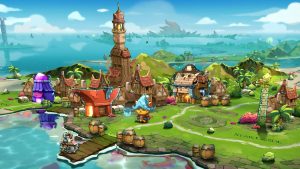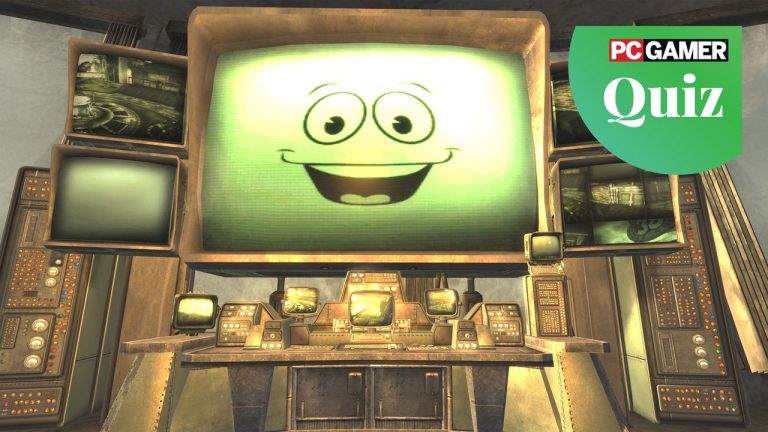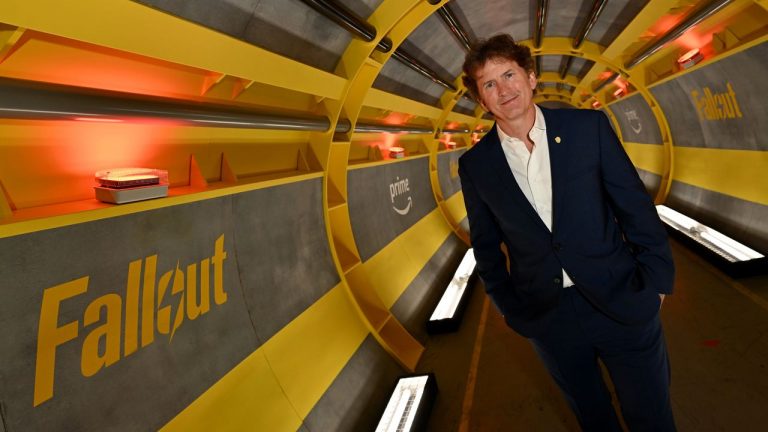Let’s see if my No Man’s Sky experience matches yours. Every year or so I boot it up, hoping the latest base-building expansion or rideable space-dino will keep me playing for longer than the couple hours it usually takes for me to drift away. Every year it fails to do so, my grand space adventure quickly deteriorating into convoluted inventory management across infinite worlds overflowing with the same repetitive activities. The latest update was no different, with pretty new floating islands and revamped water tech still leaving me wanting… more.
Enter: The Planet Crafter. One planet. One multitool. One glorious sense of agency.
The Planet Crafter wears its Subnautica influences on its sleeves, from your initial drop pod landing to the individual chunks of mineable minerals you can quickly whack together to magic up familiar-looking bases. The key difference is that you start on a barren rock rather than a vibrant alien ecosystem, tasked (or rather sentenced) with terraforming it so that the awful space capitalists can come and colonise. To be clear, this and No Man’s Sky are different games in different genres that largely seek to do different things—but they both orbit a similar loop of gathering and exploring, so it’s interesting to think about why one quickly consumed me while the other always leaves me cold.
Survival games—or at least all games with hunger and thirst metres—rely on upfronting friction then slowly relieving it as you earn tools that transform desperately scrabbling around for H2O into a casual stroll to your water bottle dispenser. In The Planet Crafter those unlocks are tied to both exploration and your terraforming progress, as you plop down drills, heaters and vegetubes that start separate pressure, heat and oxygen trackers ticking up towards total habitability.
Freedom gets a lot of hype, but I love having a job to do. I struggle with No Man’s Sky in part because of its open-endedness, where you’re largely expected to make your own fun by roaming around visiting planets, mining, trading and… expanding your inventory slots. It’s a feedback loop that leans too much into doing things so that you can incrementally improve your capability to do those same things, be that with faster mining tools or bigger ships.
(Image credit: Miju Games)
Contrast that with The Planet Crafter, where your role expands beyond mere survivor or explorer. You’re both, but you’re also a goddamn shaper of worlds. The more you build, the faster the world changes—which then feeds back into exploration, as certain ice sheets start to melt and open up new areas. It’s a deeper, more multidimensional package, playing off the satisfaction you get from both unlocking new equipment and the basal appeal of making numbers go up. Also important are those Subnautica-style individual resource chunks, giving each building and craftable item a small, discrete, and more immediately-placeable blueprint. No Man’s Sky can feel like sorting through a stack of periodic tables while drowning in resource soup.
What properly elevates The Planet Crafter, though, is how fantastic it feels to be responsible for such radical changes in the world around you. Those screens in your base with ever-escalating numbers are snazzy, but the reality they reflect outside is what’s truly scrumptious.
If I’ve snagged your interest then now’s the time to stop reading and start Planet Crafting, because a lot of the magic is bound up in not knowing exactly what those changes will be. I’ll say this, though, before we get to more specific spoilers: turning the sky blue and the ground green is scintillating in a way that makes No Man’s Sky’s brand of space tourism feel all the more hollow and unfulfilling. Lots of people have already pointed out the limitations of a universe packed with infinite AI slop, but here the alternative isn’t just “hand-crafted worlds”—it’s a world literally crafted by your hand. Or your drills. You get the point.
(Image credit: Miju Games)
Centering you in a terraforming process is a sublime way of making the world around you an interesting place to inhabit, subverting a problem you traditionally get with survival games where foraging around the same areas becomes rote. That desert? Look closely, and you’ll see shrubbery beginning to poke through the sand. Those glaciers? They’re rivers now, baby. The changes aren’t just aesthetic either, though the sheer visual impact of greenery on a once dusty rock can’t be understated. As mentioned before, melting ice leads you into caves that crisscross the map, giving you access to new shortcuts and rare resource deposits. Once the planet really starts heating up, climbable vines begin to wind their way around the rock-faces, inviting you into previously inaccessible spots that often contain juicy loot.
I should stress that it’s not just about the results, either. There’s joy within the process of optimising your terraforming doodads, figuring out the most efficient action you can take based on what you’ve unlocked so far. It’s not complicated, as such—you’re either plopping down your current highest tier of terraforming machine, gizmos that boost nearby machines by a whopping 500% for each super-rare optimisation rod you can snag, or launching rockets that add an even whoppinger 1000% boost to all existing and future production on a certain terraforming track. They’re a clever touch, those rockets, ensuring that while the next tier of gadget always delivers a satisfyingly vast bump in production, your recent efforts aren’t rendered irrelevant either.
There’s even a touch of automation to the late-game, once you’ve got auto-crafters hooked up to a drone network that pops materials directly into the cupboard next to your advanced workbench—materials you’ve spent the past 20 hours having to painstakingly assemble by hand. To an extent all games are about upfronting then alleviating friction, and The Planet Crafter knows exactly how to go about that. I’m not convinced that No Man’s Sky does.
(Image credit: Miju Games)
I should mention that the full package is far from perfect. The discoverable story fragments are clumsily written, the late-game procedurally-generated wrecks are too much of a headache to bother with, and on an undeniable, fundamental level it’s pretty darn ugly (unless you’re curating vistas for article screenshots). But it’s amazing how little that matters. Beauty is in the eye of someone beholding their oxygen consumption rate tick down to a breathable atmosphere.
Dry engineering fun might be a harder pitch than “witness the dazzling sights of an infinite universe”, but for my money it’s a much better one. I haven’t even mentioned the weirdo alien creatures you eventually splice together yourself by inserting DNA fragments that tweak different aspects of their appearance, providing an almost too on-the-nose conclusion to this comparison.
Whether it’s over an entire planet or a scuttling platypus-thing, The Planet Crafter revels and excels in imbuing you with a sense of agency. It may be rendered crudely, but the lake submerging my first base is more beautiful than any roiling ocean in No Man’s Sky’s—fancy new water tech be damned.












